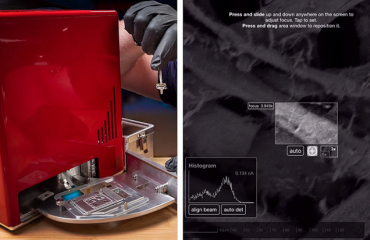OSERS Guidance on Assistive Technology | Franczek PC – JDSupra – JD Supra

In this third blog post in our series on the OSERS Question and Answer document on IDEA requirements related to returning to in-person instruction, we are focusing on an issue of special importance during and subsequent to the pandemic: assistive technology.
Even before schools shut their doors in the spring of 2020, many were already providing one-to-one devices for students. With the transition to virtual learning, even more schools provided students with laptops to enable them to participate in instruction from home. As more and more students are using technology in school, including software that provides supports like word prediction, speech-to-text, and text-to-speech, IEP team members may be unsure whether that technology should be recorded on the IEP as assistive technology for a student with a disability.
Assistive technology is defined under IDEA as “any item, piece of equipment, or product system, whether acquired commercially off the shelf, modified, or customized, that is used to increase, maintain, or improve the functional capabilities of a child with a disability.” In developing the IEP, the IEP team is charged with considering whether the student needs assistive technology to receive a free and appropriate public education (FAPE).
So to determine whether a laptop or other device belongs on a student’s IEP as assistive technology, OSERS advises that the IEP team consider whether it is a piece of equipment or product that is used to increase, maintain, or improve the functional capabilities of the student and whether it is needed for the student to receive meaningful educational benefit. If a student needs a laptop with text-to-speech capabilities in order to access the curriculum and progress toward ambitious and individualized goals, then that technology should be specified on the student’s IEP as assistive technology, even if all students have access to that same technology. On the other hand, if the technology is generally available but not needed to address a disability-related need, then it would not be included as assistive technology on the IEP.
OSERS also reminds IEP teams that a student may need assistive technology services in addition to the device or equipment itself. Assistive technology services assist a child with a disability in the selection, acquisition, or use of an assistive technology device.
While teams routinely provide assessments and trials of different devices to select those that meet the needs of a student, a common shortfall is not also providing training to the student, service providers, and family on how to effectively use the device and its features. The standard laptop that all students receive may include software that can enlarge print, spell check, and read text aloud, but if a student with a disability does not know how to use those functions as part of their daily classwork, the assistive technology will not serve the intended purpose. Teams can consider including assistive technology consultation or direct services on a student’s IEP to help the student learn to use their assistive technology and make it an effective learning tool.
The OSERS Q&A includes an overview of many IDEA topics, including the Department’s interpretations and suggestions, making it a helpful resource.
See more »
DISCLAIMER: Because of the generality of this update, the information provided herein may not be applicable in all situations and should not be acted upon without specific legal advice based on particular situations.
© Franczek P.C. var today = new Date(); var yyyy = today.getFullYear();document.write(yyyy + ” “); | Attorney Advertising
Refine your interests »
This website uses cookies to improve user experience, track anonymous site usage, store authorization tokens and permit sharing on social media networks. By continuing to browse this website you accept the use of cookies. Click here to read more about how we use cookies.
Back to Top
Explore 2021 Readers’ Choice Awards
Copyright © var today = new Date(); var yyyy = today.getFullYear();document.write(yyyy + ” “); JD Supra, LLC



